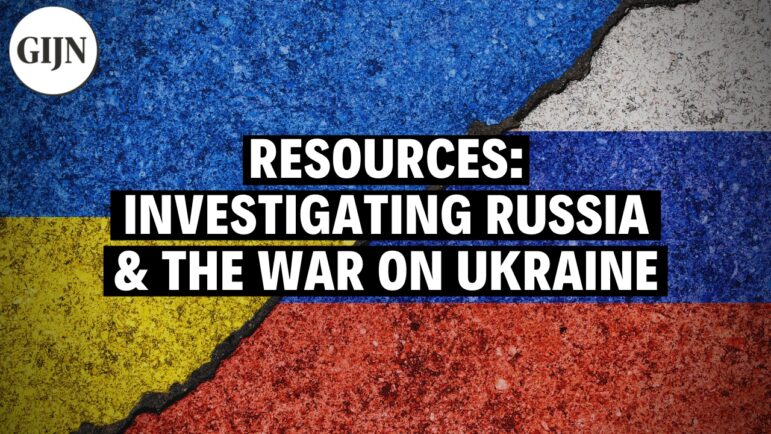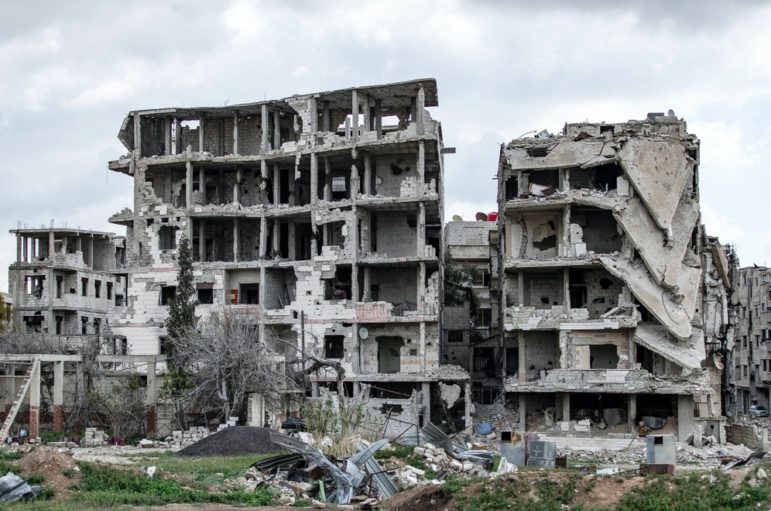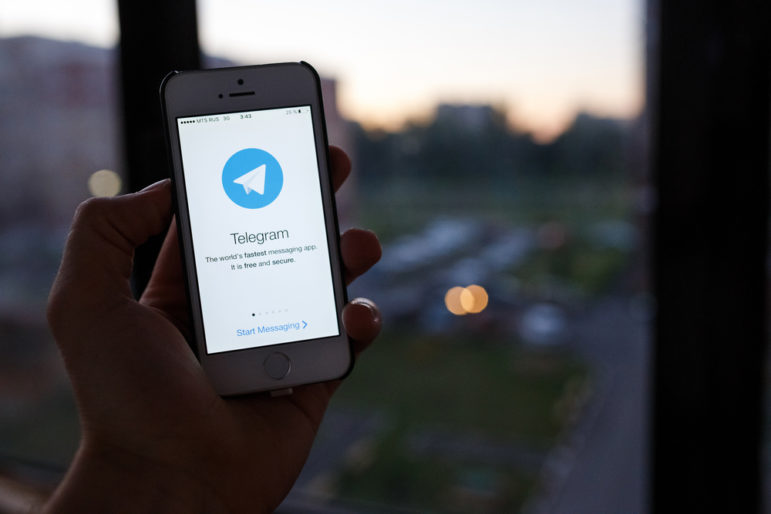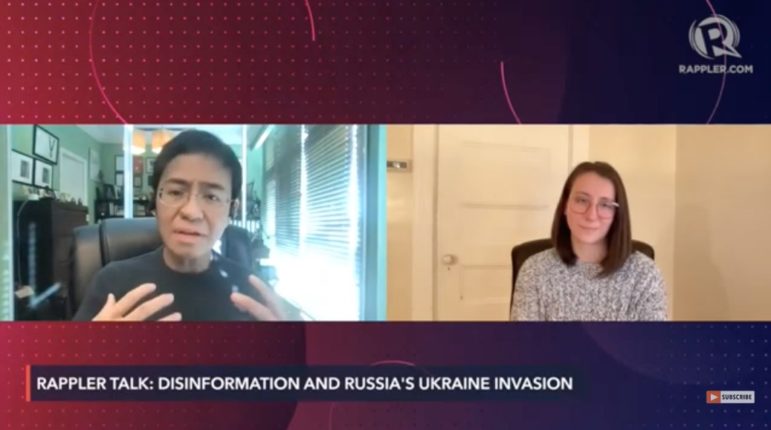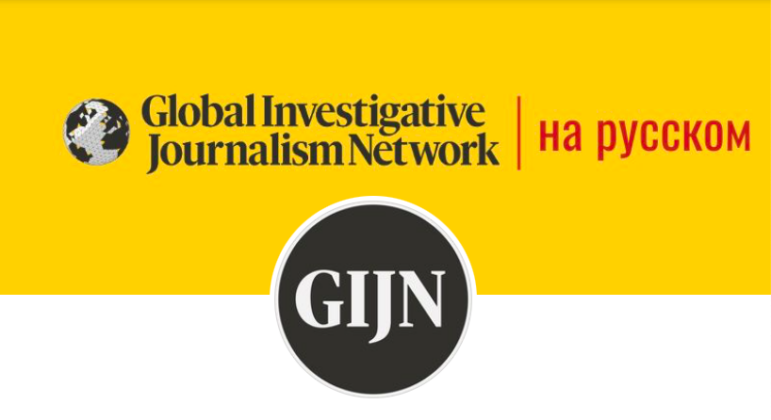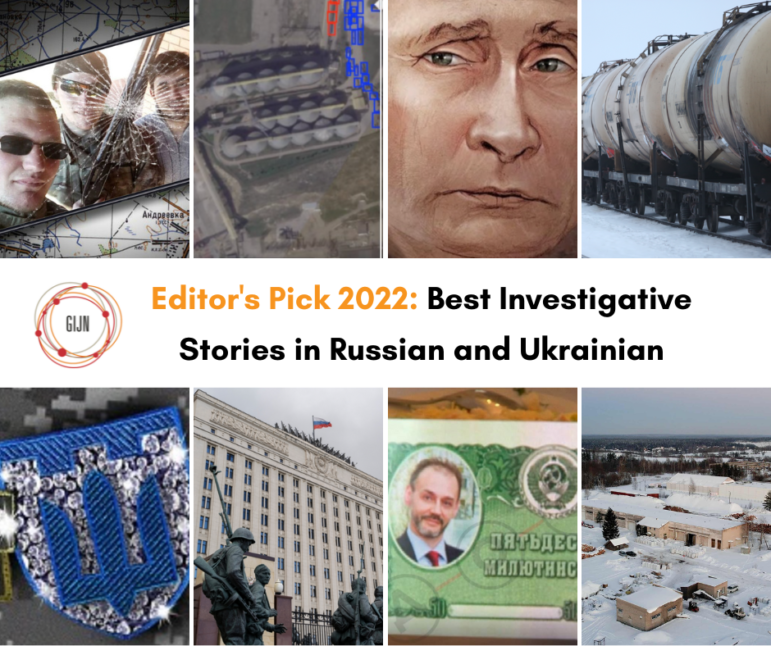

Image: GIJN
Stolen Treasures, Abducted Children, Nuclear Plant Occupation: 2023’s Best Investigative Stories in Ukrainian
Read this article in
It’s been almost two years since Russia launched its invasion of Ukraine. Regular air raids and missile-related power outages are complicating and slowing down newsrooms, many of whom have emptied after reporters and editors mobilized or volunteered for the army.
Reporters in Ukraine face constant physical danger, whether in the line of fire or in formerly occupied zones with large swathes of mined areas. There is also the constant threat — across the country — of Russian attacks with missiles or drones. Since the beginning of Russia’s first invasion in 2014, more than 68 journalists have been killed in Ukraine, according to data from the NGO Institute of Mass Information. Investigative journalists and civil activists have also faced problems with access to public information, FOIA requests, and closed official databases as the government cites wartime security reasons.
But the war hasn’t prevented Ukrainian journalists from uncovering corruption and other misdeeds, finding sources in governmental offices and law enforcement. Some public databases are slowly returning; in particular, reporters can use state procurement database Prozorro, and see budget expenditures, court decisions, and other public data. Below are some of the standout investigations Ukrainian media has managed to conduct this year.
Inflated Food Prices for the Ukrainian Army
Investigative journalist Yuriy Nikolov specializes in corruption and public procurement, and co-founded the Nashi Hroshi (“Our Money”) investigative center. From a source, he received internal documents from Ukraine’s Ministry of Defense, including a 13.1 billion Ukrainian hryvnia (US$351 million) contract for the purchase of food and catering services for military units.
According to Nikolov’s analysis, published in the online news outlet Dzerkalo Tyzhnia (“Mirror of the Week”), the contract prices for food items were two to three times higher than in a regular supermarket. For instance, the Ministry of Defense was prepared to pay 17 Ukrainian hryvnia for one egg, which costs seven hryvnia in a store, and to pay 22 hryvnias for one kilogram (2.2 lbs) of potatoes, which costs roughly one third of that in a civilian grocery store. This discrepancy indicated a possible corruption scheme in which Ukrainian defense officials were complicit.
The investigation had a substantial impact. It alerted the public to procurement and transparency issues, and led to criminal proceedings against the businessmen involved in the deal — who allegedly embezzled funds — as well as against the Ministry of Defense officials. Government officials initially called the story “misleading” and threatened to have the security service investigate Nikolov for disseminating false data. But ultimately, the deal was canceled. This revelation also marked the beginning of a number of other investigations on procurement abuses, such as a Ukrainska Pravda investigation on inflated prices for low-quality jackets for the Ukrainian military.
Nuclear Terror at Zaporizhzhia
This data-driven collaboration between Ukrainian data newsroom Texty and the Zaporizhzhia Investigation Center reconstructs the timeline of events of the Russian military’s capture and subsequent occupation of the Zaporizhzhia nuclear power plant — Europe’s largest — and its satellite town, Enerhodar.
The result is an impressive scrollytelling project with sophisticated data visualization that, designed in a calendar format, explains the timeline of events and developments as the city was seized, including locals’ resistance, the shelling of the plant, and the arrival of IAEA inspectors — and notes potential crimes committed against plant employees and other civilians. Local Zaporizhzhia journalists collected photos and videos and interviewed eyewitnesses; Texty verified data and used satellite images and maps to create the data visualizations.
Blind Trust
This investigative report by NGL.media (previously Nashi Groshi.Lviv ) on the medical corruption that led to 22 Ukrainians losing their vision was powered by the simple method of interviewing sources and getting them to share details. Without it, this incident in the city of Chortkiv in western Ukraine — which the reporters wrote “has every chance of becoming the largest case of medical malpractice in Ukraine” — may never have come to light.
NGL.media reported that in the space of one day, 22 patients at Chortkiv hospital were given injections to the eyeball to treat a retinal condition — some in only one eye, some in both — with a drug not certified for this kind of ophthalmic use in Ukraine. The patients experienced rapid vision loss, sharp pain, and burning, due to a dangerous inflammation of the retinal layers. Doctors at Ternopil regional hospital worked through the night to carry out 27 urgent and complex operations for all 22 patients to remove the affected eye tissue. Tests carried out at the hospital also showed that aggressive bacteria had been introduced during the initial treatment. A month after surgery, none of the patients’ vision had been restored.
Following a formal report by the Ternopil police, journalists called on all their professional and social skills to convince doctors and other witnesses to talk to them, and discovered that health workers had, at times, replaced the correct medicines with cheaper ones of unknown origin or counterfeit versions because the prescribed drug for this type of treatment is prohibitively expensive. Still, in some cases patients were being charged for the more expensive drugs — and staff were allegedly pocketing the difference. An official investigation is still ongoing.
The second part of NGL.media’s investigation was published in December, and notes that in the ten months since the incident, two of the patients had died, and seven others had to have their eyes removed. No charges have been brought against the medical staff responsible.
Who Cleans Ukraine’s Strategic Facilities?
This collaboration between Ukraine’s Slidstvo.Info, Latvia’s Re:Baltica, the Organized Crime and Corruption Reporting Project (OCCRP), and other media partners revealed that a cleaning firm working at the Kremlin and Russian Black Sea Fleet bases in Crimea has for years also been providing such services — through local branches — to Ukraine’s strategic facilities such as the state railway, electrical substations of Ukrenergo (the state electric operator), airports, and the state tax office.
These companies are part of a cleaning magnate’s empire with chains across Russia, Ukraine, and Belarus. Cleaning services associated with this company have continued to land government contracts for cleaning some of Ukraine’s state strategic facilities even after Russia’s invasion, which in wartime could pose a serious security risk.
When Slidstvo.Info asked the state bodies for comment, Ukrenergo said they would do further checks for ties to Russia and would pass their findings along to law enforcement; others responded that they acted in accordance with the law and chose the most reasonably priced offer. State officials told Slidstvo.Info that because the cleaning companies did not have a Russian beneficiary at the time of the contract, they did not “notice” a Russian connection. It was not confirmed whether the cleaning companies had undergone an internal security check.
Corruption in Reconstructing Ukraine
Journalists from Bihus.Info — an NGO that also includes activists, lawyers, and IT specialists — conducted a series of investigations revealing that governmental contracts worth hundreds of millions Ukrainian hryvnias intended for the reconstruction of buildings destroyed by Russian shelling were awarded to dubious companies connected to high level officials.
According to Bihus.Info, 600 million hryvnias (US$16.1 million) earmarked for reconstruction in Irpin, a small city in the Kyiv region, went to a woman who organizes children’s parties. Hundreds of millions went to other companies with questionable links and reputations: one connected to a string of criminal cases, another to separatist officials, and one that paid money to non-existent employees with fake tax numbers. According to their reporting, these companies were often selected without competition, according to unknown criteria, and through “verbal agreements.”
Bihus.Info journalists analyzed government contracts, data from the register of legal entities, and service invoices. They also talked to the companies and individuals who were awarded the funds, and through social networks and sources traced their potential connections to high-ranking officials. (All videos are available in Ukrainian with English subtitles.)
Ukrainian Children Abducted
According to human rights groups and international organizations, tens of thousands of Ukrainian children have been abducted or deported to Russia since its invasion in February 2022. This year, multiple outlets investigated various incidents: Journalists from RFE/RL used leaked emails and documents as well as witness statements to try to identify and name suspects in the forced deportation of children from the occupied territories of the Donetsk region; the Kyiv Independent team painstakingly collected documents and eyewitness testimonies to produce a video investigation into the fate of dozens of children taken from Mariupol; Slidstvo.Info established the alleged identities of individuals likely to have kidnapped 15 orphans from the Mykolaiv region, and also investigated “local collaborators” that helped abduct orphan babies from a children’s hospital in Kherson during Russia’s nine-month occupation of the city.
Stolen Treasures
Data newsroom Texty analyzed the open museum fund database and the online catalogs of the State Hermitage Museum in St. Petersburg and the Russian State Historical Museum in Moscow to find valuable Ukrainian artifacts.
The team had to go through the catalogs item by item to find those with Ukrainian places of origin. They identified around 1,200 Ukrainian geographical names out of 15,000 place names associated with archaeological items such as pots and tools, as well as coins, precious stones, and gold and silver items. The Texty team concluded that more than 110,000 of these objects had been exported from the territory of modern Ukraine to Russia over various historical periods.
Using this geodata, Texty mapped many thousands of artifacts by geographical location and time period and produced a striking online visual catalog of 6,000 of the 110,000 artifacts, magnified by one’s cursor. Still, these numbers represent merely the tip of the iceberg, they write, as they restricted their search to only certain types of artifacts.
Secrets of Russian Mercenaries
Reporters from RFE/RL’s Ukrainian and Russian investigative teams, respectively, produced an investigative documentary on a fictitious private military company set up and funded by Russian intelligence as a front to recruit soldiers for its war on Ukraine. The company has been described as a mercenary force similar to the Wagner Group, but unlike Wagner, is not part of a corporate network that funds its activities.
The investigation is based on a cache of exclusive battlefield records from one of the company’s units. To report the story, the team pored over hundreds of the company’s internal documents, as well as bills and data from Russian mercenaries’ cell phones; interviewed recruiters and relatives of mercenaries; and even talked to an individual who had been convicted of torturing residents of the Kharkiv region. With telephone traffic data they were able to trace the route of the company’s troops in Ukraine, revealing their activities in Kyiv, Kharkiv, Donetsk, and Luhansk regions that, they wrote, indicated that these combat units were involved in key Russian offensives.
 Olga Simanovych, a native of Ukraine, has more than 13 years of television experience as a journalist, screenwriter and managing editor. Seven of those years were spent as a TV news reporter for the Vikna-Novyny program on STB, where she specialized in politics, environment, human rights and medicine. From 2011 to 2016, she was a media trainer with different nonprofit organizations and participated in SCOOP‘s international investigations. A graduate of Taras Shevchenko National University, Ukraine, she is bilingual in Ukrainian and Russian, and fluent in English and Greek.
Olga Simanovych, a native of Ukraine, has more than 13 years of television experience as a journalist, screenwriter and managing editor. Seven of those years were spent as a TV news reporter for the Vikna-Novyny program on STB, where she specialized in politics, environment, human rights and medicine. From 2011 to 2016, she was a media trainer with different nonprofit organizations and participated in SCOOP‘s international investigations. A graduate of Taras Shevchenko National University, Ukraine, she is bilingual in Ukrainian and Russian, and fluent in English and Greek.
 Mariana Motrunych is a journalist, communications specialist, and GIJN’s former Ukraine editor. She was previously an analyst at the National Ukraine Agency on Corruption Prevention. She has worked at the independent newsroom Slidstvo.Info and on the anticorruption TV program Nashi Hroshi. In 2017 she received a Thomson Foundation Young Journalist Award.
Mariana Motrunych is a journalist, communications specialist, and GIJN’s former Ukraine editor. She was previously an analyst at the National Ukraine Agency on Corruption Prevention. She has worked at the independent newsroom Slidstvo.Info and on the anticorruption TV program Nashi Hroshi. In 2017 she received a Thomson Foundation Young Journalist Award.

